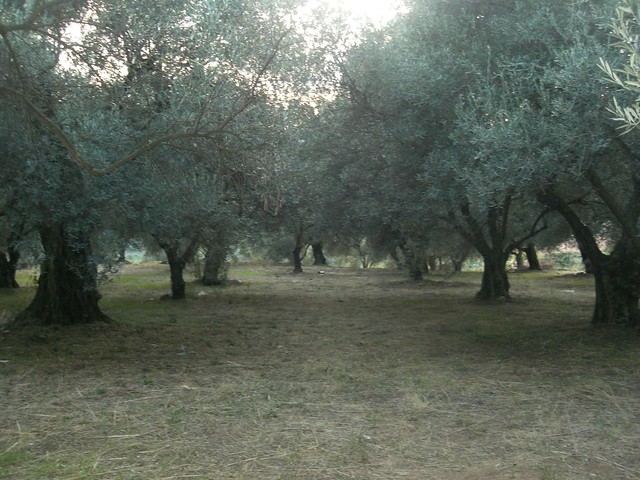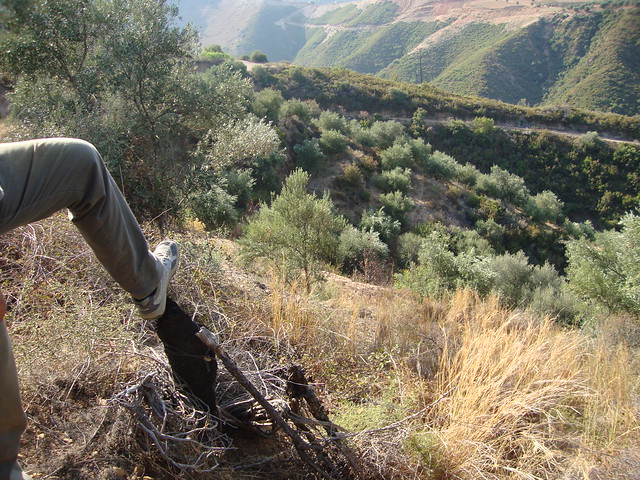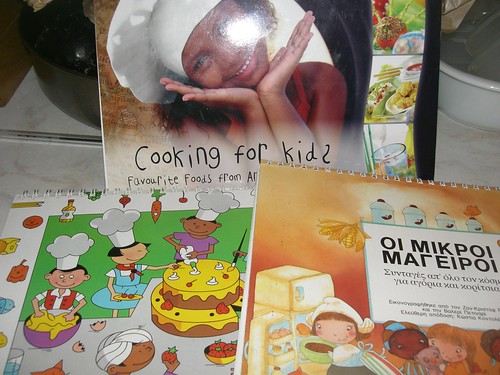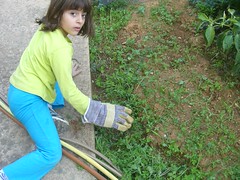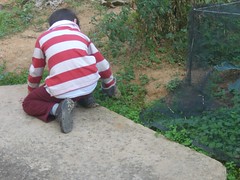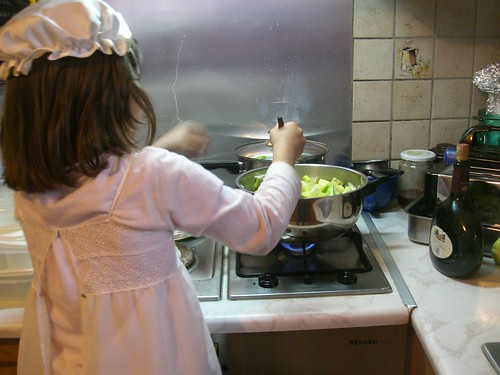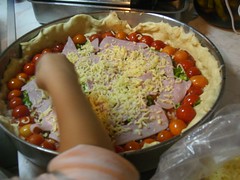
 We were entertaining an Italian friend (he is from Southern Italy) last week. It was a warm night, and we sat outdoors; we had a feeling that it would turn out to be the last al fresco evening meal for the season. Our Italian friend had brought with him a little present - he was clearing out the contents of his fridge because he has now finished his study period in Greece and is going back home soon. So he gave me all the cured meats and cheese that were left over form his last visit back home. I was in for a surprise - the cured meats were prepared by his parents. The family owns a piece of land, where they tend animals. They actually live far away from it, in an apartment block in a town. But traditions die hard among Mediterranean people and they continue to maintain close contact with ancestral land. The cured meat was particularly fascinating: it was packaged in the same way that one would expect high quality export products to be packaged, yet this was done in a private home. This kind of packaging has only recently (and I mean very recently) been adopted by Greek producers. Packaging denotes image, and this was one of the main drawbacks of Greek exports, which is slowly being rectified - Greek products often lacked image.
We were entertaining an Italian friend (he is from Southern Italy) last week. It was a warm night, and we sat outdoors; we had a feeling that it would turn out to be the last al fresco evening meal for the season. Our Italian friend had brought with him a little present - he was clearing out the contents of his fridge because he has now finished his study period in Greece and is going back home soon. So he gave me all the cured meats and cheese that were left over form his last visit back home. I was in for a surprise - the cured meats were prepared by his parents. The family owns a piece of land, where they tend animals. They actually live far away from it, in an apartment block in a town. But traditions die hard among Mediterranean people and they continue to maintain close contact with ancestral land. The cured meat was particularly fascinating: it was packaged in the same way that one would expect high quality export products to be packaged, yet this was done in a private home. This kind of packaging has only recently (and I mean very recently) been adopted by Greek producers. Packaging denotes image, and this was one of the main drawbacks of Greek exports, which is slowly being rectified - Greek products often lacked image.We served our own home brewed wine with the meal, which these days, looks quite cheap, even to me. I should not really have been worried though: our guest told us that this is the kind of wine he drinks at home too - it's the same kind of thing his father makes. The Mediterranean bond between us grew even stronger when our Italian friend told us that he was from Pisticci, which is located in the area of Italy still remembered from its past when it was known as Magna Grecia ("Big Greece").
At the last minute, I decided to prepare a dessert, something I haven't done in a while. Perhaps the cooler weather made me feel like cooking more. I invented this recipe for chocolate pots on the spur of the moment, based on another recipe for chocolate lava pots, when I realised I did not have the correct ingredients for what I intended to make. Still, it worked better than the original version, mainly for cultural reasons.

5 tablespoons of butter (Carrefour Marinopoulos is now selling a very tasty French butter under its own private label, which is also priced very well - Lurpak seems to have disappeared off its shelves)
150g chocolate (I used milk chocolate, in the form of flakes, as I had nothing else at hand; the original recipe used 70% chocolate which I have stopped buying - my family has tried it often enough to confirm their dislike of the product!)
a pinch of sea salt (as the original recipe stated - this is really unnecessary, I could hardly taste it, maybe due to the kind of chocolate that I used)
2 eggs (the original recipe stated 2 eggs and 2 yolks - I only had two eggs at home, so I tweaked the recipe)
1/4 cup sugar (as in the original recipe)
3 tablespoons of flour (the original recipe stated 1 tablespoon of flour, but I added more, together with 1/4 cup milk, to act as a binder since I had used less egg)
1/2 cup of mixed frozen berries (this was not in the original recipe: LIDL now sells them as a standard product in our local stores)

Divide the mixture into 5 ramekins and place them on a baking tray with a little bit of water in it. I began the cooking process at a very low temperature because I was still having dinner, and these chocolate pots cook quickly, so I kept the temperature low enough until it was almost time ot serve them. Just when I thought that we had finished our dinner, I raised the temperature and let the pots cook for another 10 minutes. As long as you don't burn them, this is a very forgiving recipe.
When the chocolate pots were done (I tested one to see if it was set in the centre, by inserting a knife through it), I took the tray out of the oven and left the ramekins to cool in it. The ramekins are too hot to pick up at this stage, so I allowed them to cool before I served them. The original recipe stated taking them out of each ramekin (or throwaway single-use foil cup) and serving them in a different bowl. I couldn't fathom the idea of doing more washing up afterwards - there really is no need to serve them upside down.
The texture of the dessert was soft but not gooey and the taste was semi-sweet rather than bitter, as in the original recipe. Some recipes don't work culturally. I'm glad I have worked that one out early enough, to save torturing my family; if you like a particular taste very much, there is no real need to change it.
©All Rights Reserved/Organically cooked. No part of this blog may be reproduced and/or copied by any means without prior consent from Maria Verivaki.















